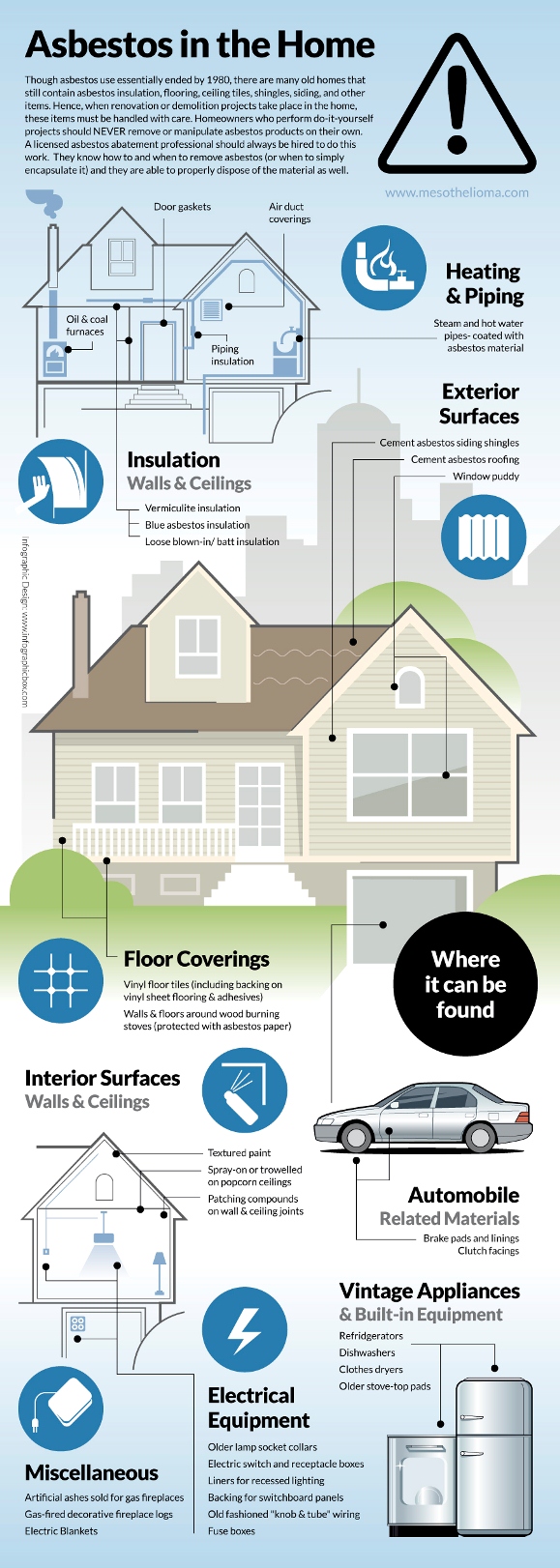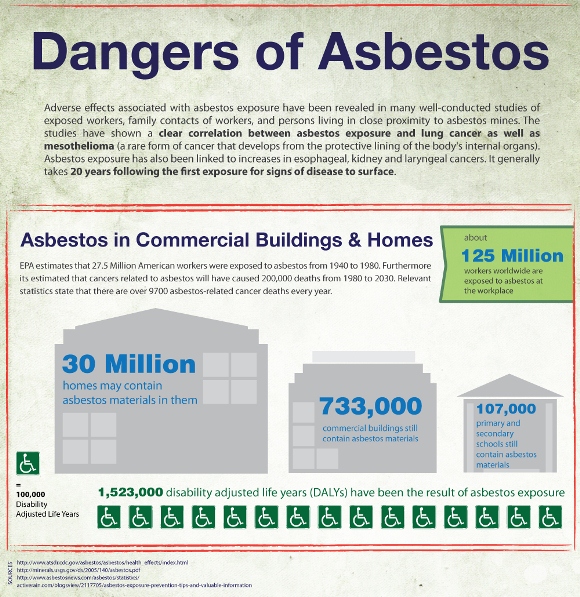 This Sunday we have a guest post from Brian Turner who is a Toxic Substance Safety Advocate for the Mesothelioma Cancer Alliance. Brian has been involved with them since 2007 & when he is not doing that he is either found playing or watching sports with his friends. So with no further ado…
This Sunday we have a guest post from Brian Turner who is a Toxic Substance Safety Advocate for the Mesothelioma Cancer Alliance. Brian has been involved with them since 2007 & when he is not doing that he is either found playing or watching sports with his friends. So with no further ado…
Most people begin home renovations with good intentions but it is easy to get carried away in the moment. There are many dangers that could cause issues for homeowners, both short-term and long-term. In particular, if you don’t know what materials you’re working with, you could be at risk of chemical exposure. One thing that homeowners often can’t detect is asbestos. In many homes today, asbestos can be found in building materials, like plaster and siding, but it was more commonly used in homes built before 1975. If you are working in an older home or just want to make sure that you aren’t interacting with dangerous chemicals, having your home tested for asbestos is the first step to keep you safe.
Why Being Cautious is Important:
Asbestos is a fire-retardant that was used in building materials and structures from the 1940s through the 1970s. Exposure to asbestos can cause cancer, specifically mesothelioma and other lung diseases. While asbestos is not harmful on its own, if disturbed or deteriorating, asbestos releases small fibers unseen by the human eye which are breathed in, thus affecting the lungs and esophagus.
Risk Factors to Consider:
If you are working on an older home with thermal insulation around boilers and pipes, you are probably in danger of inhaling asbestos. In other areas, asbestos was also used in vinyl floor tiles, some types of linoleum, window caulking, roofing materials, HVAC dust insulation, siding materials and plaster. If you believe that you are working with any of these materials, it’s important to have your home tested for asbestos by a professional. The inspection will also look at other types of possible exposures and provide recommendations on how to repair, remove and protect against these exposures.
Keep Safety in Mind:
Whenever performing DIY remodeling projects you should wear a respirator or facemask that covers your mouth and nose. In addition, heavy-duty clothing, boots, gloves and safety glasses are also important methods of protection. The best way to prevent exposure to substances such as asbestos is to leave it intact and hire a professional to safely remove it from your home. If you want to protect yourself and your family, removal or simply leaving it alone if it is in good shape are the best options.
I would like to once again thank Brian Turner for this piece & here are two infographics from their site with some more good info. If you would like to see a fuller size simply click on them & it will take you to their site.



Insightful and useful article, with some great infographics. Thank you for making many homeowners aware of the risk asbestos can cause. Many homeowners are unaware of such potential dangers. It is best to seek advise from professionals with regards asbestos removal.
Thanks for the kind words Terry & I got to agree, most homeowners don’t know of the risks – while information on it was prevalent over 10 years ago, most outlets have stopped talking about it which is to bad as many that are just buying houses have never heard of the risks
Insightful and useful article, with some great infographics. Thank you for making many homeowners aware of the risk asbestos can cause. Many homeowners are unaware of such potential dangers. It is best to seek advise from professionals with regards asbestos removal.
Thanks for the kind words Terry & I got to agree, most homeowners don’t know of the risks – while information on it was prevalent over 10 years ago, most outlets have stopped talking about it which is to bad as many that are just buying houses have never heard of the risks